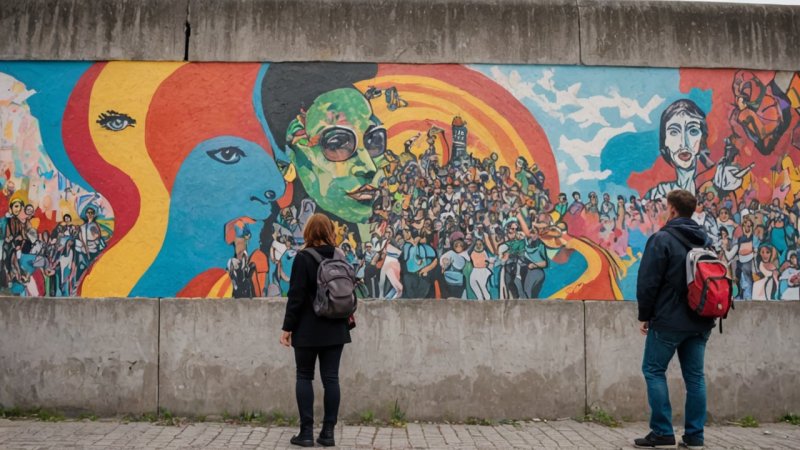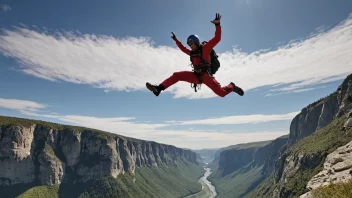The Berlin Wall stands as one of the most powerful symbols of division and unity in modern history. Erected in 1961, it physically and ideologically separated East and West Berlin until its fall in 1989. This monumental structure, which once represented the oppression of the Cold War, has now transformed into a canvas of artistic expression and a reminder of the resilience of the human spirit. Travelers exploring Berlin today can witness the remnants of the wall, delve into its history, and understand its profound impact on the city and its people. This article seeks to guide you through the key highlights, travel tips, and unique experiences associated with the Berlin Wall, ensuring you gain a comprehensive understanding of this iconic landmark.
Historical Context of the Berlin Wall
The Berlin Wall was erected on August 13, 1961, marking a significant point in the Cold War. The division of Germany into East and West was a result of geopolitical tensions following World War II. East Germany, backed by the Soviet Union, sought to prevent mass emigration to the West, where opportunities for freedom and prosperity seemed more abundant. The wall was constructed overnight, and its existence became a stark representation of the ideological divide between communism and democracy.
Life Before the Wall
Before the construction of the wall, Berlin was a city of significant cultural and social interaction. Families were divided, and many people crossed the border daily for work or leisure. The sudden emergence of the wall abruptly halted this dynamic, leading to emotional turmoil and a physical separation that lasted nearly three decades.
The Wall’s Construction and Structure
The Berlin Wall was primarily made from concrete and stood approximately 12 feet high. It evolved over the years, with various barriers added, including guard towers, barbed wire, and a no-man's land that made escape nearly impossible. The wall's design was not only about physical separation but also about instilling fear and control over the East German population.
The Fall of the Berlin Wall: A Turning Point
The fall of the Berlin Wall on November 9, 1989, was a momentous event that symbolized the end of the Cold War and the beginning of German reunification. Triggered by a series of peaceful protests and a shift in political dynamics, the wall's collapse was met with jubilation and relief. Thousands of people gathered to celebrate as they dismantled parts of the wall, signifying a hopeful future of unity and freedom.
Aftermath and Reunification
In the years following the fall, Berlin underwent significant transformation. The reunification of Germany was marked by a wave of optimism, as people from both sides of the city began to reconnect. The once-divided city blossomed into a vibrant hub of culture and innovation, attracting visitors from around the world. Efforts to preserve the history of the wall have been made through various memorials and museums dedicated to educating future generations about its significance.
Visiting the Berlin Wall Today
Travelers can explore various sections of the Berlin Wall, each offering a unique perspective on its history. The East Side Gallery, a 1.3-kilometer stretch of the wall, is now an open-air gallery featuring artworks from international artists. This vibrant collection of murals celebrates freedom and unity, making it a must-visit for anyone interested in art and history.
Key Sites to Explore
- Berlin Wall Memorial: Located along Bernauer Straße, this memorial includes a visitor center that provides insight into the wall's history and impact.
- Topography of Terror: This museum is situated on the former site of the Gestapo and SS headquarters and offers exhibitions on the history of Nazi atrocities and the Berlin Wall.
- Checkpoint Charlie: Once the most famous border crossing point between East and West Berlin, this site now features a museum detailing the stories of those who attempted to escape.
- East Side Gallery: A significant cultural landmark where artists have transformed the wall into a canvas for peace and freedom, this area is perfect for a leisurely walk and photography.
Travel Tips for Visiting the Berlin Wall
When planning your visit to the Berlin Wall, consider the following tips to enhance your experience:
- Timing: Visit during the off-peak season (late fall or winter) to avoid crowds at popular sites.
- Guided Tours: Consider joining a guided tour to gain deeper insights into the history and significance of the wall from knowledgeable guides.
- Public Transport: Berlin has an extensive public transport system, including trams, buses, and trains, making it easy to navigate the city and reach key sites.
- Stay Informed: Check local events or exhibitions related to the Berlin Wall to enrich your visit with additional context and perspectives.
Unique Experiences Related to the Berlin Wall
Beyond visiting the wall itself, there are unique experiences that allow you to delve deeper into Berlin's history and culture:
- Walking Tours: Participate in walking tours that focus on the history of the Berlin Wall, exploring the stories of those who lived through its existence.
- Cultural Events: Attend cultural events or exhibitions that commemorate the anniversary of the wall's fall, often featuring performances, discussions, and art displays.
- Culinary Experiences: Explore the diverse food scene in Berlin, which reflects the city’s reunified spirit, showcasing influences from around the world.
In conclusion, the Berlin Wall is not just a physical barrier that once divided a city, but a historical landmark that embodies the struggles and triumphs of humanity. As travelers, we have the opportunity to walk in the footsteps of history and reflect on the lessons learned from the past. By exploring the remnants of the wall, engaging with its history, and experiencing the vibrant culture of Berlin, visitors can gain a deeper appreciation for the journey from division to unity. Whether you are an avid historian or a casual traveler, the Berlin Wall offers a profound experience that resonates with all who visit.






